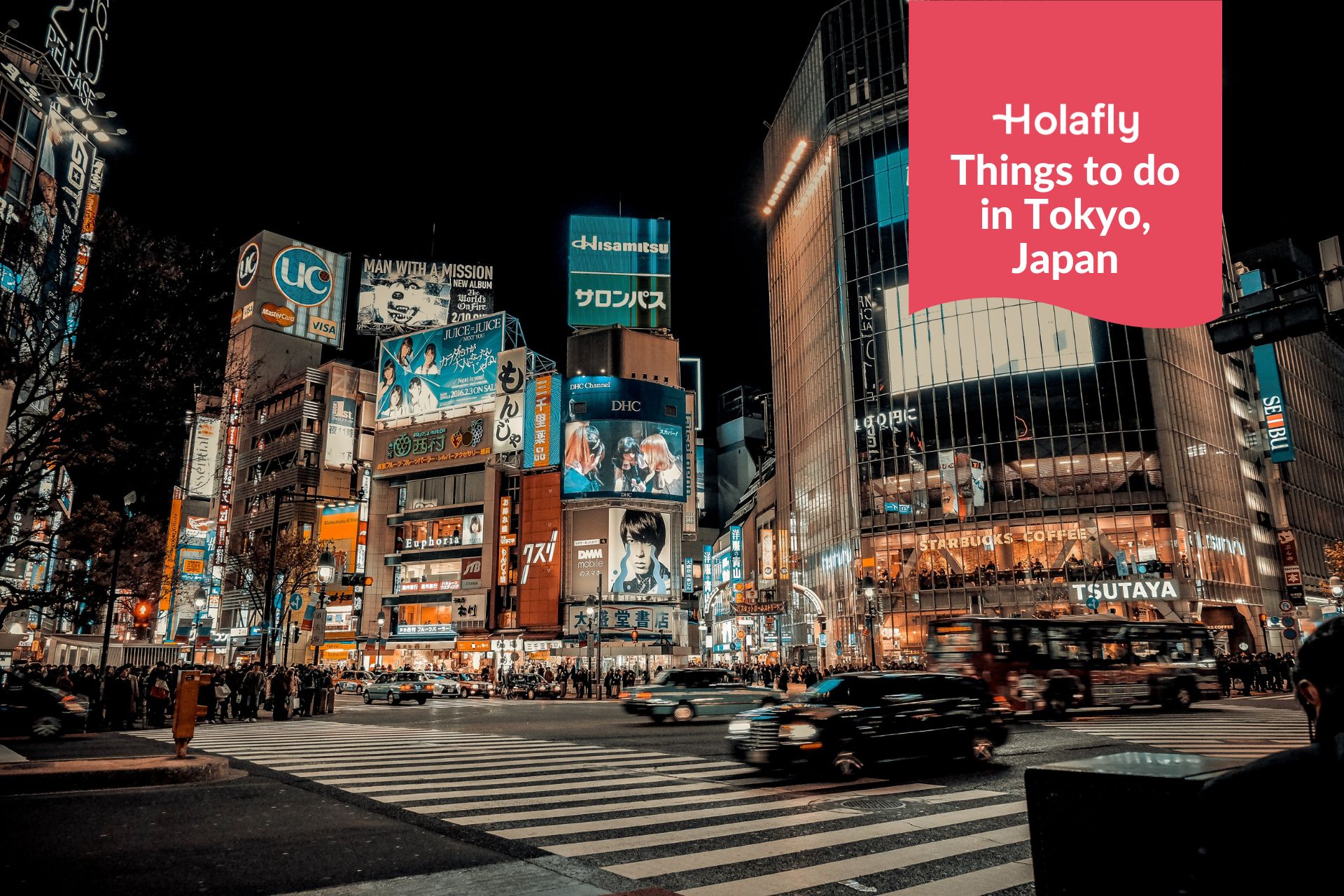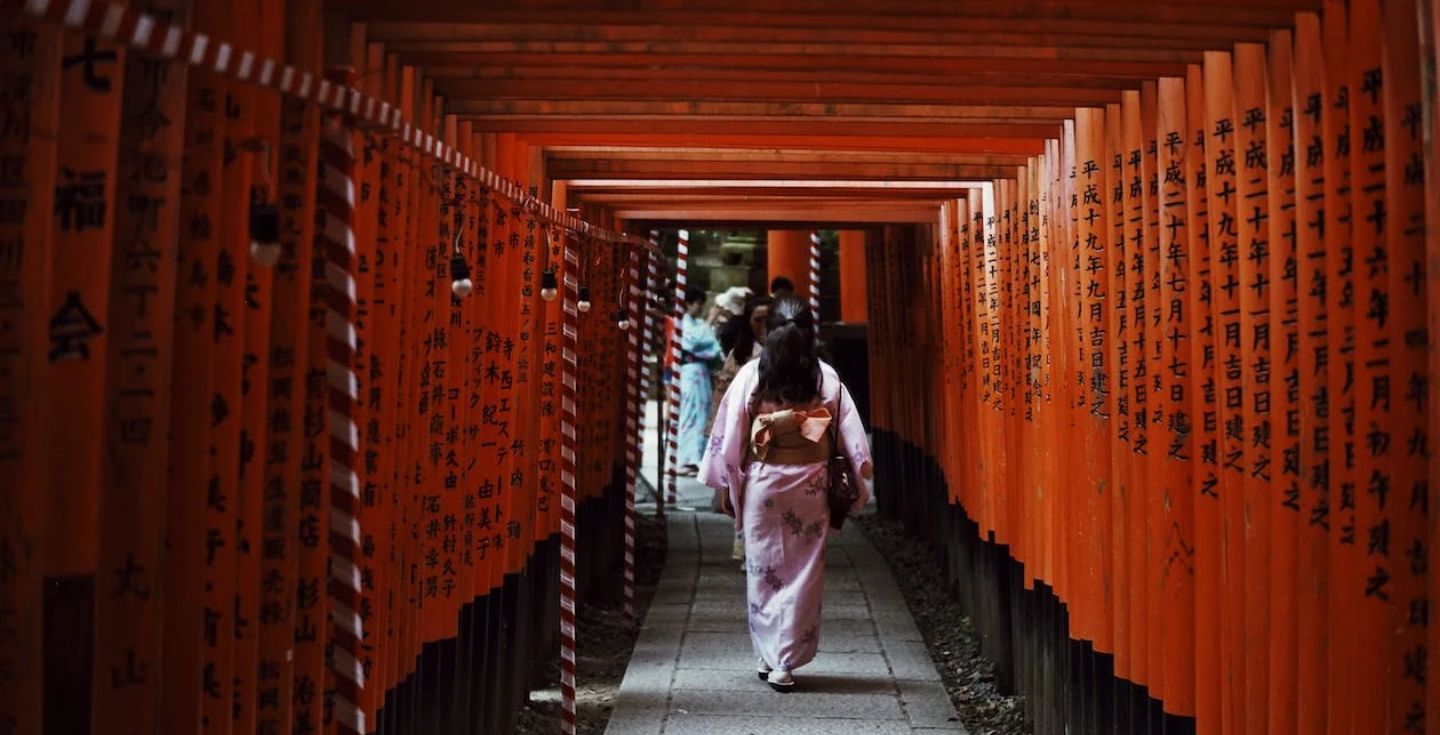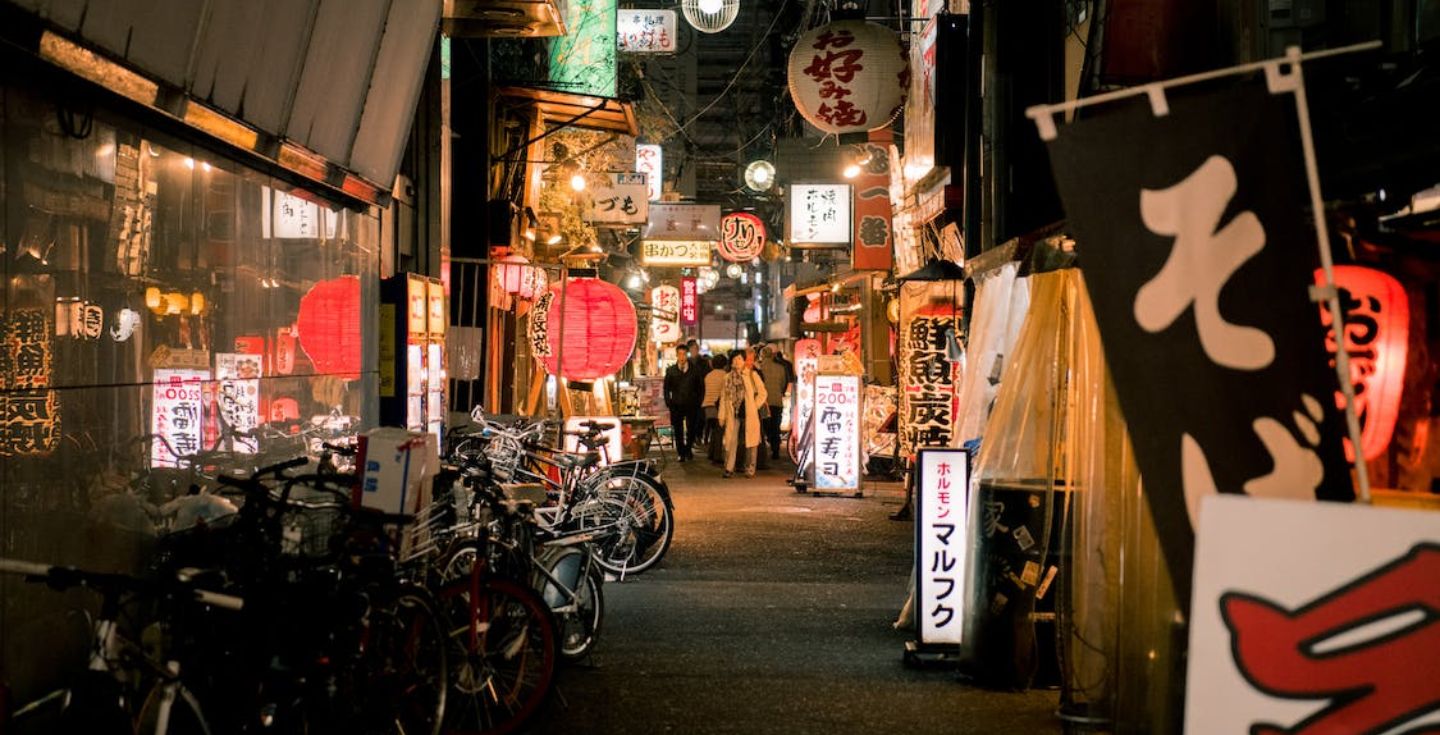Complete guide to IC cards in Japan: Suica, Pasmo, and more
Navigate public transport in Japan like a pro with our comprehensive guide on using IC cards — how they work, where to get them, and service area limitations.
Whether you’re traveling to Japan solo or as part of a group, the most important travel tip is getting an IC card. Simply tap and go — no more waiting in ticket lines, especially during peak hours.
This guide breaks down everything you need to know about IC cards in Japan, including the different types of cards available, how to use them, and how they differ from other travel passes like the JR pass and day passes.
Before we get into that, we answer the most pressing question: What is an IC card in Japan?
What is an IC card?
An IC card (Integrated Circuit Card) is a rechargeable smart card that you can use to pay for fares on trains, subways, buses, and ferries when traveling in Japan.
Certain convenience stores, vending machines, and restaurants also accept payments via IC cards.
There are several types of IC cards available in Japan, the most popular ones being Pasmo, Suica (Welcome Suica for foreign visitors), and ICOCA.
Some even provide digital versions of the IC Card. However, international travelers can only access digital cards from an iPhone.
What are the different types of IC Cards in Japan?
Currently, there are 10 major IC cards — issued by different rail operators and regions in Japan.
However, they’re mostly compatible with each other and can be used interchangeably. And with each of these cards having a mascot, IC cards have become a popular collectible item.
The total initial cost for each card is approximately $13.40 (¥2,000), with $3.35 (¥500) being the refundable deposit. Also, except for Pasmo, all cards have a $1.47 (¥220) return/handling fee.
While the cards can be used all over Japan, they don’t cover certain special train fares (like limited express trains) or Shinkansen rides (bullet trains). You’ll need to buy additional tickets to ride those.
Here’s a quick summary of the different cards and where they’re issued:
| IC Card | Region | Issued by | Digital version? |
| Suica | Greater Tokyo, Niigata, Sendai | JR East | Yes, Mobile Suica |
| Pasmo | Tokyo area | Pasmo committee | Yes, Mobile Pasmo |
| ICOCA | Kansai region (Osaka, Kyoto) | JR West | Yes, Mobile ICOCA |
| Toica | Tokai region (Nagoya) | JR Central | No |
| Manaca | Nagoya area | Local transport operators in the area | No |
| Kitaca | Hokkaido (Sapporo) | JR Hokkaido | No |
| Sugoca | Kyushu (Fukuoka) | JR Kyushu | No |
| Nimoca | Kyushu (Fukuoka) | Nishitetsu | No |
| Hayakaken | Fukuoka City | Fukuoka City Transportation Bureau | No |
| PiTaPa | Kansai region | Surutto KANSAI consortium | No |
Let’s dive into each IC card in more detail:
1. Suica
- Can be used for: JR trains, subways, monorails, and buses
- Can’t be used for: Bullet trains, long-distance trains, or airport transfers
- Coverage: Greater Tokyo area, including Niigata and Sendai
- Validity: The Suica card is valid for 10 years. The Welcome Suica card is valid for 28 days.
- Deposit: No deposit for the Welcome Suica card; ~$3.20 (¥500) deposit for the Suica card
- Refund: Non-refundable
Issued by JR East, the Suica Japan IC card enables you to travel by train, subway, monorail, and bus and shop in the Greater Tokyo area, including Niigata and Sendai.
With the Suica card, you can’t travel on bullet trains, long-distance trains, or airport transfers. There’s also a digital version — Mobile Suica — that you can add to your Apple Wallet app.
The card remains valid for 10 years from the last use — super useful if you travel to Japan frequently. However, if you’re on a short, one-time visit, then the Welcome Suica card — launched for tourists — can be a better option. It’s valid for 28 days and doesn’t require a deposit. However, it’s not refundable.
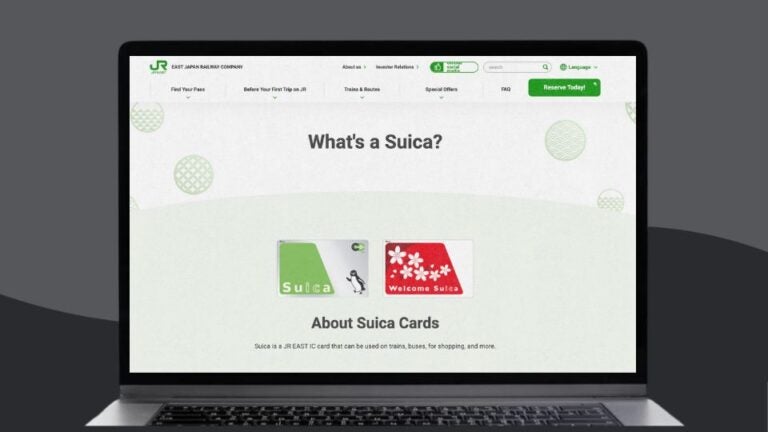
| Important note: Due to a semiconductor shortage, the basic versions of both Pasmo and Suica are temporarily unavailable for purchase. |
2. Pasmo
- Can be used for: Trains, subways, and busses
- Can’t be used for: Bullet train
- Coverage: The metro Tokyo area, Sapporo, Hiroshima, Kyoto, Aichi, Osaka, and Fukuoka
- Validity: 10 years
- Deposit: ~$3.20 (¥500) deposit
- Refund: Possible
The Pasmo card is issued by the Pasmo Committee, which includes various private transport companies in the Tokyo region, like Tokyo Metro and Tokyu. There’s a digital version (Mobile Pasmo) that you can add to your Apple Wallet.
Pasmo is the only IC card that doesn’t have a return or handling fee. You’ll be refunded the entire amount when you return the card. Like the Suica cards, Pasmo doesn’t support Shinkansen (bullet train) rides.
Please note that the Pasmo Passport (their IC card for tourists) was discontinued in August 2024. So you’ll need to purchase the regular card.
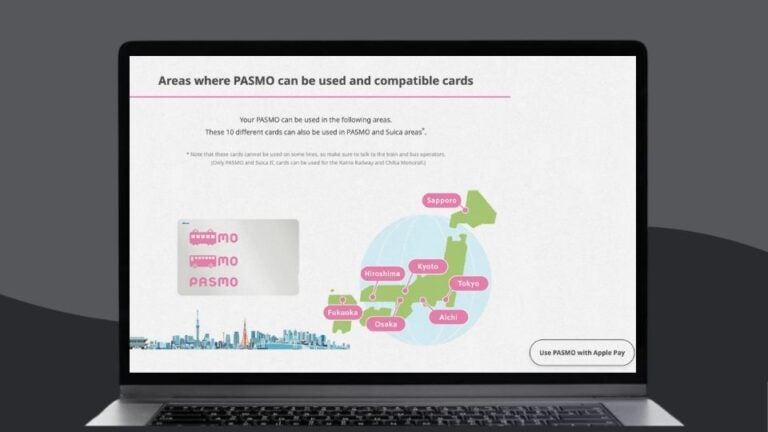
3. ICOCA
- Can be used for: Train, subway, and bus rides
- Can’t be used for: Shinkansen trains, train rides longer than 200 km
- Coverage: Kansai region (Osaka, Kyoto, and Kobe)
- Validity: 10 years
- Deposit: ~$3.20 (¥500) deposit
- Refund: Possible
The third most popular IC card in Japan, ICOCA, is issued by JR West for public transportation in the Kansai Region (Osaka, Kyoto, and Kobe), meaning is a great option no matter how many days you spend in Kyoto or any other city.
Fun fact: the name plays on the Kansai dialect phrase “Iko ka,” which means “Shall we go?” They’ve also named their mascot — a blue platypus — Ico. It also has a mobile version called Mobile ICOCA.
Foreign tourists can opt for the Kansai One Pass (a special version of the ICOCA card), which gives you a discount when visiting various attractions in the Kansai Region.
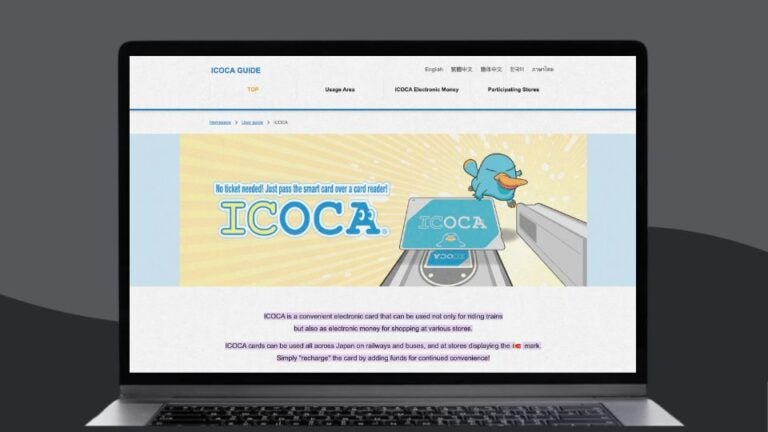
4. Toica
- Can be used for: Trains, subways, and buses
- Can’t be used for: Crossing from one IC card area to another
- Coverage: Tokyo, Nagoya, the Kansai Region, and Kitakyushu
- Validity: 10 years
- Deposit: ~$3.20 (¥500) deposit
- Refund: Possible
The Toica card is issued by JR Central (Central Japan Railway Company) for the Tokai region of Japan.
This includes the Greater Nagoya area and some parts of Shizuoka Prefecture. Unlike some other IC cards, Toica doesn’t have a tourist-only or digital version.
Its mascot is two cheerful yellow chicks.
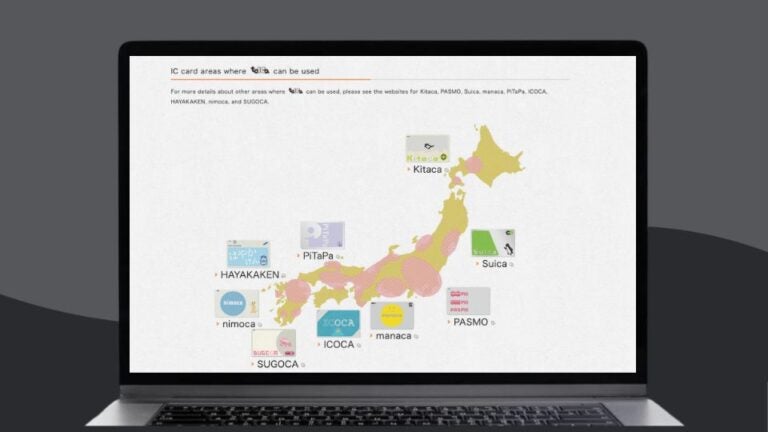
5. Manaca
- Can be used for: Trains, subways, and buses
- Can’t be used for: Trips outside the IC card network
- Coverage: Nagoya and Aichi Prefecture
- Validity: 10 years
- Deposit: ~$3.20 (¥500) deposit
- Refund: Possible
Issued by the Nagoya Transportation Bureau and Meitetsu (Nagoya Railroad), the Manaca card is used primarily in the Nagoya area and the Aichi Prefecture in Japan. The mascot is a yellow smiley face.
An advantage of the Manaca card is its point system. You earn mileage points based on your spending, which you can then redeem for discounts on future travel or other rewards.
Plus, if you transfer between city buses or a bus and a subway within 90 minutes, you get a $0.50 (¥80) discount.
6. Kitaca
- Can be used for: Trains, subways, and buses
- Can’t be used for: Trips outside the IC card network
- Coverage: Greater Sapporo region
- Validity: 10 years
- Deposit: ~$3.20 (¥500) deposit
- Refund: Possible
The Kitaca card is issued by JR Hokkaido (Hokkaido Railway Company) for public transportation in the Greater Sapporo region and surrounding areas like Otaru.
The mascot is Ezo Momonga, a type of flying squirrel native to Hokkaido.
IC cards have limited use on JR Hokkaido lines compared to other regions in Japan. For example, they can’t be used for continuous travel between the Sapporo-Asahikawa area and the Hakodate area.
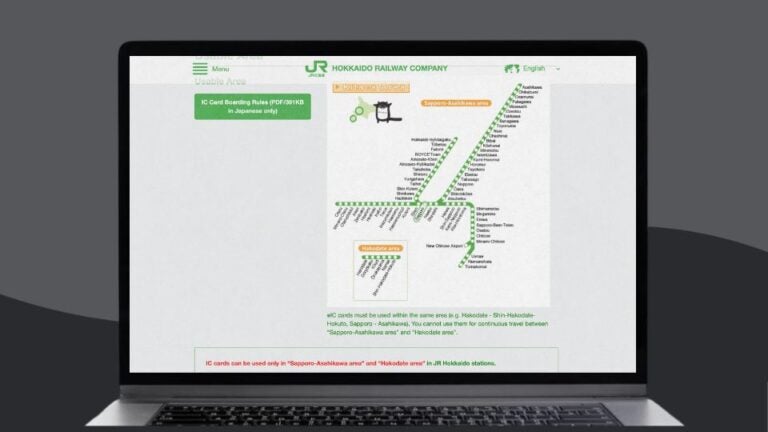
7. SUGOCA
- Can be used for: Trains, subways, and buses
- Can’t be used for: Trips outside the IC card network
- Coverage: Kyushu, Fukuoka, Kumamoto, Kagoshima, Oita, and Nagasaki regions
- Validity: 10 years
- Deposit: ~$3.20 (¥500) deposit
- Refund: Possible
The SUGOCA card is issued by JR Kyushu (Kyushu Railway Company) for transportation in the Kyushu, Fukuoka, Kumamoto, Kagoshima, Oita, and Nagasaki regions.
The mascot for the SUGOCA card features two characters:
- Frog Boy (kaeru-kun), a cartoon frog
- Clock Boy (tokei-kun,) a little red clock
8. Nimoca
- Can be used for: Nishitetsu trains and buses
- Can’t be used for: Trips outside the IC card network
- Coverage: Kyushu region and Fukuoka Prefecture
- Validity: 10 years
- Deposit: ~$3.20 (¥500) deposit
- Refund: Possible
Issued by Nishi-Nippon Railroad (Nishitetsu), this is another prepaid IC card that’s popular in the Kyushu region and Fukuoka Prefecture.
While it mainly covers the Nishitetsu trains and buses within the Greater Fukuoka area, you can also use it to pay for some non-JR transportation services in other cities in Kyushu and Hakodate.
It’s got two mascots — the popular yellow ferret named Nimoca-chan and a less popular bird named Mejiron.
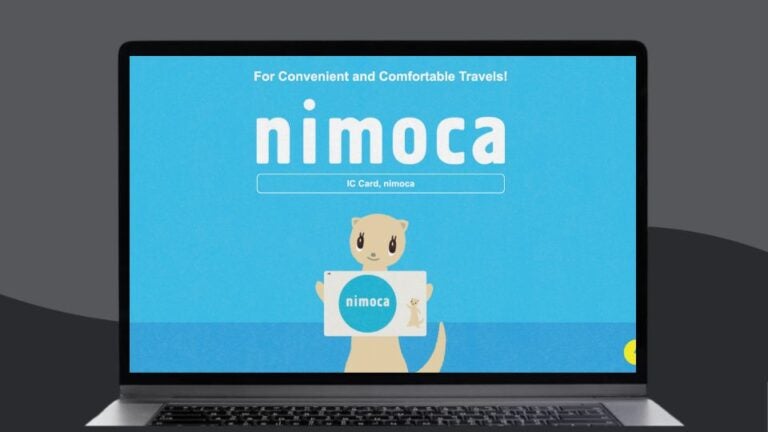
9. Hayakaken
- Can be used for: Fukuoka subways, trains and buses in Japan that have the IC mark
- Can’t be used for: Trips outside the IC card network
- Coverage: Fukuoka City
- Validity: 10 years
- Deposit: ~$3.20 (¥500) deposit
- Refund: Possible
The Hayakaken is a prepaid IC card issued by the city of Fukuoka for use on the Fukuoka subways. The mascot is a prairie dog named Chikamaru.
10. PiTaPa
- Can be used for: Trains (such as the Osaka Metro, Hankyu Railway, and Keihan) and regional buses
- Can’t be used for: JR trains and buses and non-transport services
- Coverage: Kansai region and some parts of the Chubu region and Hokuriku region
- Validity: 10 years
- Deposit: N/A (postpaid system)
- Refund: N/A (postpaid system)
Unlike other prepaid cards, the PiTaPa card is postpaid — your travel fares will be automatically deducted from your linked bank account at the end of the month.
It’s unavailable for foreign tourists as it requires a Japanese bank account and a credit check.
The standard version of the PiTaPa card is issued by the Surutto KANSAI consortium. There are also PiTaPa Affiliate Cards, issued by local transit companies, and they come with benefits like loyalty programs and discounts.
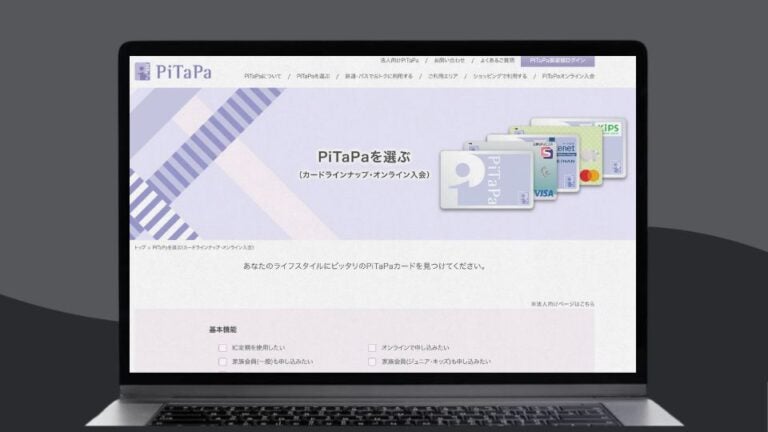
Now that you know the main IC card providers, let’s explore how to get an IC card in Japan and where you can purchase one during your travels.
Where to buy an IC card in Japan
You can get an IC card at vending machines/ticket offices, at airports, or online.
- Suica: JR East stations (vending machines and ticket offices) in eastern Japan, including Tokyo, and at Narita and Haneda airports
- Pasmo: Tokyo Metro stations, Toei Subway stations, and other non-JR stations in the Tokyo area, as well as vending machines and ticket offices at Narita and Haneda airports
- ICOCA: JR West stations (vending machines and ticket offices) in the Kansai area (Osaka, Kyoto, Kobe), and at Kansai International Airport
- Toica: JR Central stations in the Tokai region (around Nagoya), and at select vending machines and ticket offices in JR Central areas
- Manaca: Nagoya Municipal Subway stations and Meitetsu stations (vending machines and ticket offices), as well as major transportation hubs in the Chubu region
- Kitaca: JR Hokkaido stations in the Sapporo area (vending machines and ticket offices), and at New Chitose Airport
- SUGOCA: JR Kyushu stations (vending machines and ticket offices), including Fukuoka, and at Fukuoka Airport
- Nimoca: Nishitetsu stations (vending machines and ticket offices) in Fukuoka and surrounding areas, as well as at Fukuoka Airport
- Hayakaken: Fukuoka City Subway stations (vending machines and ticket offices), and at Fukuoka Airport
- PiTaPa: Available by applying online or at certain transport company service centers in the Kansai region (Osaka, Kyoto, Kobe)
| Travel tip: No documentation is required to purchase a prepaid IC card. Simply pay the initial cost — $13.40 (¥2,000) — and purchase your card. |
You can also order your physical IC cards online and pick them up from an airport or train station when you arrive in Japan.
Some services like Japan Experience can courier your tourist-only IC card (like Welcome Suica) to you for an additional fee.
Buying a mobile IC card
If you’re on an iPhone 8 or later, you can buy a digital version of Suica, Pasmo, or Icoca from the company’s official iPhone apps.
It’s quite convenient — you can easily switch between different IC cards and top them up using the bank account linked to Apple Pay.
Unfortunately, tourists with Android phones can’t use the mobile IC card. Android phones require compatibility with the Japanese app Osaifu Keitai.
This isn’t supported by most phones sold outside of Japan. Plus, it’s available only in the Japanese language and requires an address in Japan.
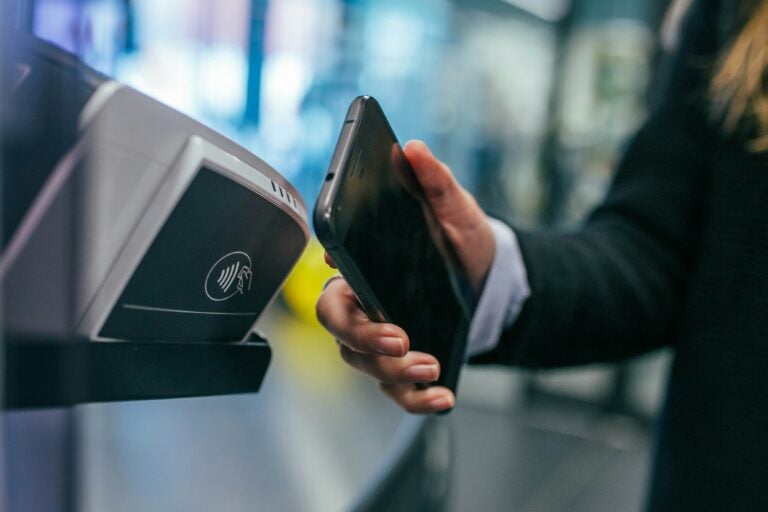
How to use an IC card in Japan
Using an IC card is a straightforward process. Simply hold your card (or iPhone display) over the blue illuminated ticket reader at the gate until you hear a beep and see a green light.
When you reach your destination, repeat the process at the exit ticket gate. The fare will be automatically deducted from your card balance.
If you’re using it to pay at a vending machine, just tap your card on the designated area after selecting your item.
Using IC Cards on Shinkansen (bullet trains)
You can use the IC card on certain Shinkansen lines but that requires an extra setup procedure.
Tokaido/Sanyo/Kyushu Shinkansen
Register your IC card and credit card via the Tokaido Sanyo Kyushu Shinkansen Online Reservation Service.
Then purchase your ticket online and use your IC card to pass through the gate. The fare will be charged to your credit card, not your IC card balance.
Shinkansen in Eastern/Northern Japan
Similar to the above one, purchase your e-ticket on JR East’s reservation website. Your fare will be charged to your credit card, and you can use your IC card to pass through ticket gates.
Shinkansen Operated by JR East
This requires a one-time setup at a ticket machine to activate the “Touch de Go” service.
You can then use your IC card directly for non-reserved seats on some lines along the Tohoku, Akita, Yamagata, Joetsu, and Hokuriku Shinkansen trains. Unlike the other two, here, the fare will be subtracted from your IC card.
Recharging your IC card
You can top up your IC card at ticket stations and recharge stations at train stations, subways, or buses.
Another option is convenience store ATMs like 7-Eleven, FamilyMart, and Lawson. Just make sure you visit one that has instructions in English.
You’ll be asked to choose between 1,000, 2,000, 3,000, 4,000, 5,000, or 10,000 yen — and most machines only accept cash payments. So make sure to take some cash with you when traveling to Japan.
The maximum balance that can be loaded onto an IC card is usually $133 (¥20,000). You can check your remaining balance at ticket machines or dedicated balance inquiry machines.
Returning your IC card
While this is also a straightforward process, you can only return your IC card to the issuing company. It is not possible to return a Suica card in Osaka or an ICOCA card in Tokyo.
When you return the card, you will receive a refund of the initial deposit and the remaining balance (minus the handling fee).
If you’re flying out from a different city and can’t return the card, then make sure to spend any remaining balance and unused credit.
Most major stations, convenience stores, and some shops at airports accept IC cards for purchases.
IC card vs. other travel passes
Apart from the prepaid IC card, Japan also offers two other travel passes — the Japan Rail (JR) Pass and Day Pass. Here’s how they work:
JR Pass
The JR Pass allows unlimited travel on JR trains, including Shinkansen (bullet trains), local trains, and some JR buses across Japan.
However, for non-JR transportation, you’ll need an IC card or separate tickets.
Prices start at around $470 (¥70,000) for the Green Pass and $335 (¥50,000) for the Standard Pass for seven consecutive days.
Children between 6 to 11 years receive a 50% discount on the adult prices and those under 6 years can travel for free.
Day Pass
Day Passes are an affordable option for tourists looking to explore a particular city in a day (sightseeing tours). Some popular options include:
- Tokyo Metro and Toei Subway 1-Day Pass: Unlimited travel on all Tokyo Metro lines and Toei Subway lines for one day
- Tokyo Metropolitan District Pass (Tokunai Pass): Unlimited travel on all JR East lines (local and rapid) within the Tokyo city limits for one day
- Kansai Area Pass: Unlimited travel on JR trains in the Kansai region, including Osaka, Kyoto, and Nara
- Hiroshima Tram 1-Day Pass: Unlimited rides on Hiroshima’s tram network for one day
If you’re trying to decide between an IC card, JR Pass, or a Day Pass, the comparison table below will help you determine which option is best suited to your travel needs.
| IC card | JR pass | Day passes | |
|---|---|---|---|
| Usage | Local transport and purchases | Unlimited travel on JR lines | Unlimited travel in a specific area |
| Coverage | Most major cities and regions | Nationwide on JR trains | Limited to one city/region |
| Cost | $13.40 (¥2,000) + usage fees | $335 (¥50,000) for 7 days | $3.33-$13.33 (¥500-¥2,000) per day |
| Best for | Multiple short trips within cities | Long-distance, inter-city travel | One-day travel within a city |
Tips for using IC cards in Japan
Here are some more points to keep in mind when using an IC card in Japan:
- If you’re taking a limited express train or bullet train, you’ll need to buy a separate ticket for the extra cost, even if you use your IC card for the basic fare.
- Both the origin and destination stations have to be located inside the IC card’s coverage area. So even though you can use a Suica card to travel within Kyoto, you can’t use it to go from Kyoto to Tokyo.
- If you travel between IC coverage areas, you’ll be shown a red error message at the exit gate, and the gate won’t open. Go to the fare adjustment counter to pay the required fee or get assistance from a staff member.
Some final thoughts on IC cards and navigating Japan
IC cards are a great way to travel within Japan, but not the most convenient option out there. Mobile IC cards, for example, are easier to use (and more practical too) for iPhone users. Just be sure to check coverage areas to avoid any issues while traveling.
Holafly’s eSIM for Japan — with its unlimited data packages for as low as $1.55 per day — is a great way to connect to the internet from anywhere in Japan.
Whether that’s to top up your mobile IC card, plan your route, or research if you need an extra ticket when traveling on different trains. Plus, with Holafly, you can keep your WhatsApp number to call home while traveling.
Purchase your Holafly eSIM, stay connected from anywhere, and travel through Japan like a local!





 Language
Language 


















 No results found
No results found





